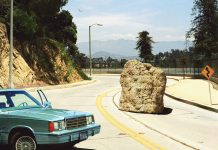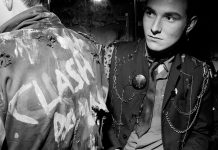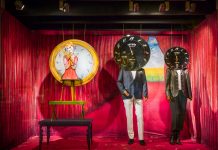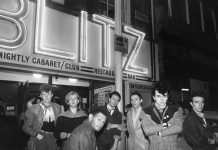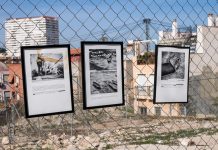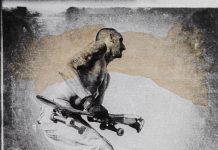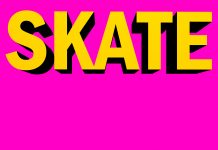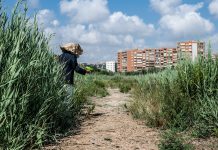
City Skate Tour #14 Alicante, 23 June 2021. Parque La Ereta. Alicante. Spain.
(1) City Skate Tour starts from a performative idea of urban space through a dissident sample of photographs, texts, photocopied, altered images, all of them belonging to the City 00Skate Days (CSKD) series. (2) To the extent that skateboarding seeks a new vital and social rhythm in the appropriation of the city and the search for alternative itineraries, the photographic exhibition can also become a differentiated urban practice, capable of creating visual thresholds far removed from uses and institutional submissions of art.
(3) The city is the nexus between image and skate. There is no claim in this. There is no other result than that which a passerby could attribute to you when encountering an unexpected image, an attribution of which any value or meaning is unknown. (4) But there are other ways of saying it: City Skate Tour proposes intervention in peripheral enclaves and restores the rhythm of a random, minimal world. That is why the influx of people in those specific spaces do not matter so much as the way in which the image becomes visible through the context that surrounds it. Skateboarding is a metaphor for that threshold.
(5) In City Skate Tour, the idea is projected into a basic action: crossing the city can be considered an imperceptible, inconsequential happening, but if at some point in the journey something causes the passer-by to stop, the action could also become a social fact. In this case, stopping is accompanied by other minimal acts: assembling the images to an urban surface has more to do with creating a site for the image than with a purely expository need.
(6) Between the action and the fact there is a whole compendium of social and artistic traditions that were going to try to show the city as something tangible associated with an altered, even revolutionary dynamic. The references are multiple, but what interested me is, above all, that the city can be used to express ideas, whether complex or simple. Ideas that become tangible in action. (7) The public expression of a work requires some type of social requirement, and this does not have to be restricted to the programmatic conventions of galleries or institutions.
(8) If the Situationists had shown another way of conceptualizing the urban experience based on a playful-constructive behavior, radicalized by their insistence on requesting for themselves a vital state that denied capitalist norms, I find in the gesture of the painter Peter Hobbs a current that unites art, nomadism and situationism. The art critic Thomas Crow would express it as an emerging art form that moved away from any foreseeable gaze: «Peter Hobbs led the situationist aesthetic towards a process of isolated nomadism», and he did so by hosting his canvases on vacant lots in the East End of London to photograph them later as an indirect, but more vivid and real, way of recreating the painting in an urban installation. War photographer Don McCullin helped him create that sensation through photographs that were to fix the fact, that moment, on the margins of institutional life.



Fotocopia #2. An alternative urban experience. 2015-2019. Texto. The spatial practice developed by the skater collective represents a practice apart from the traditional struggles for the right to the city. Skateboarding takes the streets and squares of the city, adapting, appropriating them without having to claim them. Skateboarding does not build a discourse of vindication. When they are thrown out of a space they look for another one where they can skate. They represent new ways of appealing the right to the city. Skaters proclaim an alternative urban experience, await their recognition and their right to use the urban space as more than a space for commercial relations, for communication between one point and another in the city. Through their spatial practices they achieve to mark a collective distinction that responds to their recreational and identity needs at the same time. And they configure a geography of meeting points and practice, places that are sources of meaning and social capital. Referencia. Xavier Camino Vallhonrat. Estudio cultural del skateboarding en Barcelona, 2012.
Fotocopia #55. Retrato. 2015-2019. Texto. When thinking about skateboarding or having a representation of a skater, images of bodies and corporeal subjects come to our memory. In general we usually visualize them moving, jumping through the air or moving. Skate is putting the body into action, putting it in falls, in the challenges of jumps that seem to want to overcome the force of gravity, in slow and controlled movements on a horizontal surface, and in the vertigo and speed of a plane inclined. Skate is not stillness: it is movement. Referencia. Jorge Ricardo Saraví. Cuerpos skaters, 2014.




